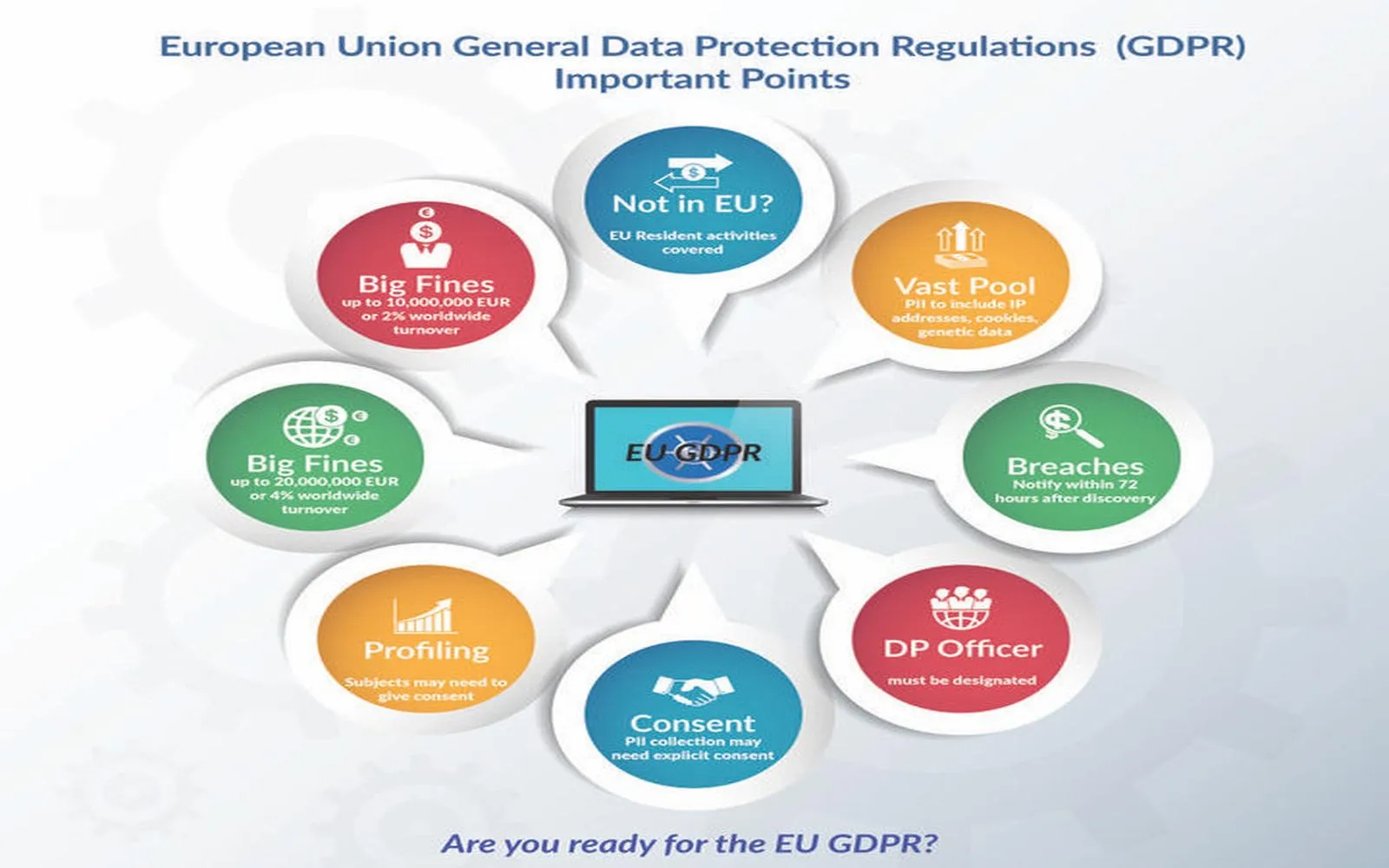Ultimate Guide to Secure Data Protection Services: Safeguard Your Sensitive Information
In an increasingly digital world, safeguarding sensitive information has never been more critical. Data breaches and cyber threats are rising, making robust data protection services essential for individuals and businesses alike. This ultimate guide explores the fundamental strategies and tools necessary to secure your data effectively. From encryption techniques to secure cloud storage options, we’ll delve into the best practices for protecting your personal and organizational information. Understanding these services not only helps in compliance with regulations but also fosters trust with clients and stakeholders, ensuring that your sensitive data remains out of reach from malicious actors.
Introduction
In today's digital age, data is an invaluable asset for individuals and businesses alike. As we store vast amounts of sensitive information online, the threat of data breaches and cyberattacks looms large. The need for secure data protection services has never been more critical. In this guide, we will explore the various aspects of data protection, including its importance, the types of services available, best practices, and how to choose the right provider for your needs.
The Importance of Data Protection
Data protection is essential for several reasons. First and foremost, it helps safeguard sensitive information from unauthorized access and theft. Personal data, financial information, intellectual property, and confidential business documents are all at risk if proper data protection measures are not implemented.
Secondly, data protection is crucial for compliance with various regulations and standards. Many industries are governed by strict data protection laws, such as the General Data Protection Regulation (GDPR) in Europe or the Health Insurance Portability and Accountability Act (HIPAA) in the United States. Failing to comply with these regulations can result in severe penalties and legal repercussions.
Lastly, maintaining data integrity and availability is vital for business continuity. Data loss due to cyberattacks, natural disasters, or human errors can severely disrupt operations and lead to significant financial losses. Proper data protection services can help mitigate these risks and ensure that your data remains secure and accessible.
Types of Data Protection Services
Data protection services come in various forms, each designed to address specific needs. Here are some of the most common types of data protection services:
1. Data Encryption
Data encryption is the process of converting sensitive information into a coded format that can only be accessed by authorized users. This is a fundamental measure for protecting data both at rest and in transit. Robust encryption protocols ensure that even if data is intercepted, it remains unreadable without the appropriate decryption keys.
2. Data Backup and Recovery
Regular data backups are vital for protecting against data loss. Backup solutions can be cloud-based, on-premises, or a combination of both. In the event of a data breach, system failure, or natural disaster, having a reliable backup can make all the difference in restoring operations swiftly and effectively.
3. Firewalls and Intrusion Detection Systems
Firewalls act as a barrier between your internal network and external threats. They monitor incoming and outgoing traffic and help prevent unauthorized access. Intrusion Detection Systems (IDS) complement firewalls by identifying and responding to potential security breaches in real-time.
4. Endpoint Protection
With the rise of remote work, securing endpoints such as laptops, smartphones, and tablets has become increasingly important. Endpoint protection services safeguard devices from malware, ransomware, and other threats, ensuring that sensitive data remains secure regardless of where it is accessed.
5. Data Loss Prevention (DLP)
DLP solutions help organizations monitor and control the movement of sensitive data. By identifying where sensitive information is stored and how it is used, DLP can prevent unauthorized sharing or leakage of confidential data, both internally and externally.
6. Identity and Access Management (IAM)
IAM solutions control user access to sensitive data and applications. By implementing role-based access controls and multi-factor authentication, organizations can minimize the risk of unauthorized access and ensure that only authorized personnel can access sensitive information.
7. Security Information and Event Management (SIEM)
SIEM solutions provide real-time analysis of security alerts generated by applications and network hardware. By aggregating and analyzing data from various sources, SIEM can help organizations identify potential threats and respond proactively to incidents.
Best Practices for Data Protection
Implementing data protection services is just the beginning. Organizations must also follow best practices to ensure that their data remains secure. Here are some essential best practices:
1. Conduct Regular Risk Assessments
Regularly assessing your organization's data security risks can help identify vulnerabilities and areas that require improvement. By performing risk assessments, organizations can develop a comprehensive data protection strategy that addresses their unique needs and challenges.
2. Train Employees on Data Security
Your employees are often the first line of defense against data breaches. Providing regular training on data security best practices, phishing awareness, and safe online behavior can empower employees to recognize and respond to potential threats effectively.
3. Develop a Data Protection Policy
A well-defined data protection policy outlines how sensitive information should be handled, stored, and shared within the organization. This policy should include guidelines for data classification, access controls, and incident response procedures.
4. Keep Software Updated
Outdated software can be a significant vulnerability. Regularly updating operating systems, applications, and security software can help protect against known vulnerabilities and exploits used by cybercriminals.
5. Implement Strong Password Policies
Weak passwords are a common entry point for cyberattacks. Implementing strong password policies that require complex passwords and regular changes can help reduce the risk of unauthorized access to sensitive data.
6. Use Multi-Factor Authentication (MFA)
MFA adds an extra layer of security by requiring users to provide multiple forms of verification before gaining access to sensitive data or systems. This significantly reduces the likelihood of unauthorized access, even if a password is compromised.
7. Encrypt Sensitive Data
As mentioned earlier, encryption is a critical measure for protecting sensitive information. Ensure that all sensitive data, both at rest and in transit, is encrypted using strong encryption standards.
Choosing the Right Data Protection Service Provider
With numerous data protection service providers available, selecting the right one can be a daunting task. Here are some factors to consider when choosing a provider:
1. Assess Your Needs
Before searching for a service provider, assess your organization's specific data protection needs. Consider factors such as the types of data you handle, regulatory compliance requirements, and your budget. This assessment will help narrow down your options.
2. Look for Industry Experience
Choose a provider with experience in your industry. They will be more familiar with the unique challenges and regulatory requirements you face, ensuring that they can offer tailored solutions that meet your needs.
3. Evaluate Security Measures
Ensure that the provider employs robust security measures, including encryption, firewalls, and intrusion detection systems. Ask about their incident response protocols and how they handle data breaches.
4. Check Compliance Standards
Verify that the provider complies with relevant data protection regulations, such as GDPR, HIPAA, or PCI DSS. Compliance with these standards demonstrates a commitment to data protection and can help mitigate your organization's liability.
5. Read Customer Reviews and Testimonials
Research customer reviews and testimonials to gauge the provider's reputation and reliability. Look for feedback on their customer service, response times, and overall satisfaction with their services.
6. Assess Scalability
Your organization's data protection needs may evolve over time. Choose a provider that offers scalable solutions that can grow with your organization and adapt to changing requirements.
7. Evaluate Cost
While cost should not be the only factor in your decision, it is essential to consider your budget. Compare pricing models among different providers and ensure that you understand what is included in each service package.
The Future of Data Protection
As technology continues to evolve, so too do the threats to data security. The future of data protection will likely involve advancements in artificial intelligence, machine learning, and automation to enhance security measures. These technologies can analyze vast amounts of data to identify patterns and anomalies, allowing for quicker detection and response to potential threats.
Moreover, as remote work becomes more prevalent, the need for secure data protection services will only increase. Organizations must remain vigilant and proactive in their approach to data security, adapting to the ever-changing threat landscape.
Conclusion
In an era where data breaches and cyberattacks are increasingly common, investing in secure data protection services is no longer optional. By understanding the importance of data protection, the various services available, best practices, and how to choose the right provider, you can safeguard your sensitive information and maintain the trust of your clients and stakeholders.
Remember, data protection is an ongoing process that requires continuous evaluation and adaptation. Stay informed about emerging threats and technologies, and ensure that your organization remains committed to protecting its most valuable asset—its data.
Explore

Data Protection: Safeguarding Information in a Digital World

Guarding Your Digital Fortress: Essential Data Protection Services for a Safer Tomorrow

Top 10 Reliable Cloud Backup Services: Secure Your Data with Confidence

Data Security Management: Essential Strategies for Protection

Navigating the Legal Maze: How a DUI Lawyer Can Safeguard Your Future

Navigating the Legal Labyrinth: How a Skilled DUI Defense Attorney Can Safeguard Your Future

Safeguard in Commercial Vehicle Insurance

Best Cloud Security Services to Protect Your Business Data
